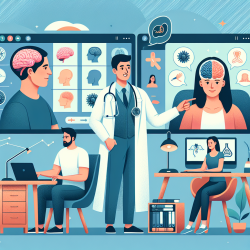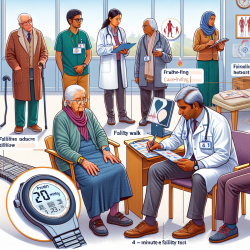Embracing the Future of Therapy: Online and Data-Driven
In the evolving landscape of therapeutic services, the integration of technology has become more than a trend; it's a necessity. Online therapy, or telepractice, is reshaping how we deliver care, particularly in the realm of speech therapy for autism. As occupational therapists, understanding and leveraging these advancements can significantly enhance the outcomes for the children we serve.
The Power of Data-Driven Decisions
Data-driven decision-making is not just a buzzword; it is a pivotal strategy that enhances the effectiveness of therapeutic interventions. By utilizing robust data analytics, therapists can tailor their approaches to meet the specific needs of each child, ensuring that interventions are not only personalized but also highly effective.
Research has shown that data-driven approaches in therapy can lead to measurable improvements in communication skills, particularly for children with autism. By continuously monitoring progress and adjusting strategies based on data, therapists can provide targeted support that fosters significant developmental gains.
Why Online Therapy Works
Online therapy platforms, such as those provided by TinyEYE, offer unique advantages that traditional in-person therapy cannot. These include:
- Accessibility: Children in remote or underserved areas can access quality therapy without the need for travel.
- Consistency: Online sessions can be scheduled more flexibly, reducing cancellations and ensuring consistent progress.
- Engagement: Interactive digital tools can make sessions more engaging for children, particularly those with autism, who may respond better to visual and interactive stimuli.
Moreover, online therapy provides a rich source of data. Each session can be recorded and analyzed, allowing therapists to track progress and adjust their strategies in real-time.
Taking the Next Step
For occupational therapists looking to expand their practice and enhance their impact, exploring telepractice jobs and incorporating online therapy into their services is a logical next step. By joining platforms like TinyEYE, therapists can be part of a forward-thinking community that prioritizes data-driven decisions and evidence-based practices.
Incorporating online therapy into your practice not only broadens your professional horizons but also significantly benefits the children you work with. The ability to deliver high-quality, personalized therapy remotely can transform lives, particularly for children with autism who require consistent and specialized support.
Conclusion
As we look to the future of therapy, the integration of technology and data-driven strategies is not just beneficial; it's essential. By embracing these innovations, occupational therapists can ensure they are providing the best possible care, leading to joyful outcomes for children and their families. Now is the time to take the next step and explore the opportunities that online therapy offers.










